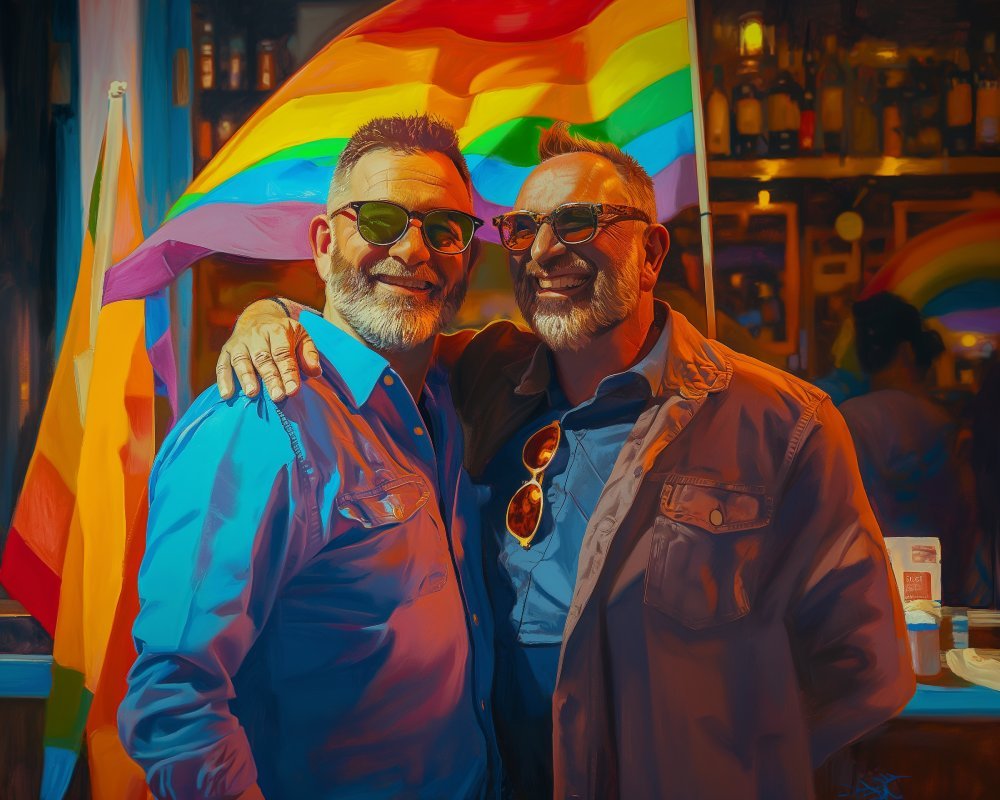
What Is Gay Representation? A Comprehensive Exploration of LGBTQ+ Portrayal in Media and Beyond
Table of Contents
- Introduction
- Defining Representation: What Is Gay Representation?
- Historical Perspectives: The Beginnings of LGBTQ+ Portrayal
- Media’s Role in Shaping Public Perception
- Early Depictions: From Hidden Identities to Queer-Coded Characters
- The Importance of LGBTQ+ Representation
- Transitions in the Late 20th Century: Growing Visibility and Challenges
- Contemporary Portrayals: The Good, The Bad, and The Complex
- Intersectionality in Queer Representation
- Tokenism, Rainbow Capitalism, and Authenticity
- Highlighting Positive Representations and Case Studies
- The Ongoing Struggle: Challenges and Critiques
- Future Directions: A More Inclusive, Nuanced, and Global View
- Conclusion: Reimagining and Reclaiming LGBTQ+ Narratives
- Additional Resources and Further Reading
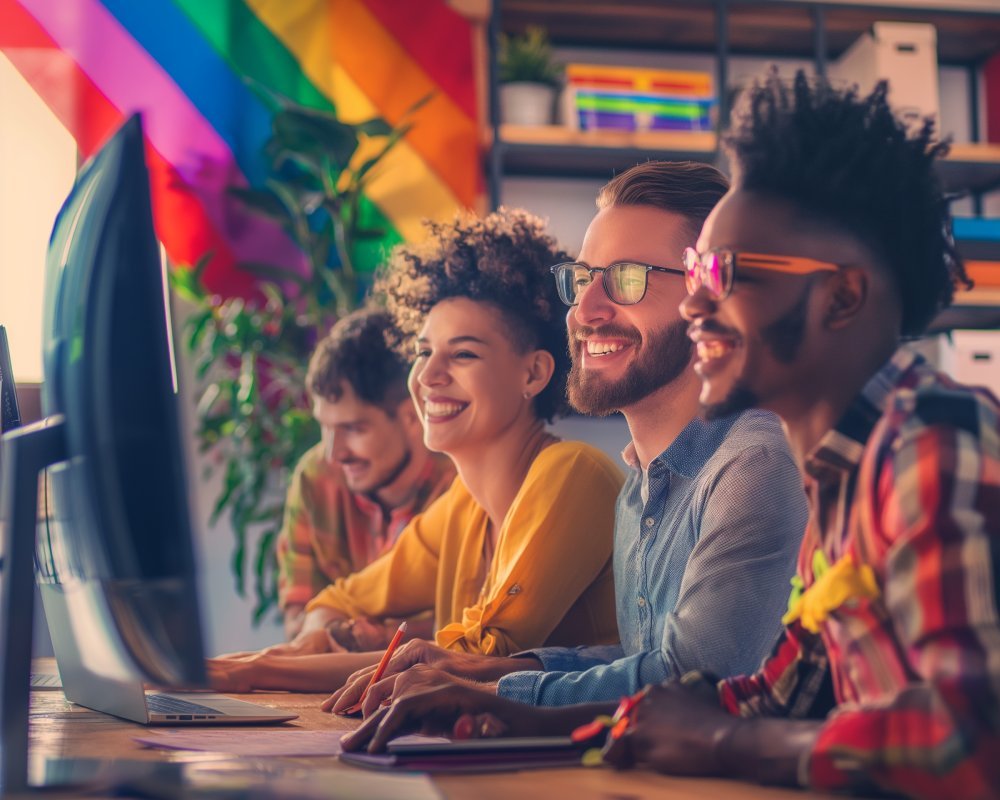
1. Introduction – What Is Gay Representation?
Gay representation—often folded into the broader umbrella of LGBTQ+ representation—is more than a simple matter of seeing non-heterosexual characters on television or in movies. It signifies the broader cultural, social, and political weight of how an entire community is portrayed, acknowledged, and integrated into narratives that shape our collective understanding of identities. When we talk about representation, we talk about who gets to tell stories, who is centered in these stories, and whether these portrayals challenge stereotypes or reinforce them.
Over the course of history, gay characters and queer narratives have run the gamut: from subtle hints and caricatures to overt, proud, and unabashed celebrations of identity. Whether in cinema, literature, art, television, or digital spaces, media portrayal of LGBTQ people has served as a mirror of society’s evolution. At times, that mirror has been distorted by prejudice, censorship, or fear, leading to misrepresentation or outright invisibility. At other times, it has offered hope, showing us the power of authentic stories that humanize marginalized groups.
This comprehensive blog will delve into the depths of gay representation, considering how the media’s depiction of queer communities has changed over time and analyzing the importance of these depictions in shaping cultural norms. We will explore the earliest hints of LGBTQ+ characters in mainstream culture, examine milestone works that revolutionized public perception, highlight the lingering challenges of tokenism and rainbow capitalism, and celebrate the strides made toward authentic, inclusive storytelling. Additionally, we will address the intersection of race, class, gender identity, and sexuality—underscoring the fact that queer representation is far from monolithic. Ultimately, this exploration will underscore how the road to true, nuanced representation is ongoing, calling on creators, audiences, and activists to continue demanding more honest, varied, and inclusive portrayals of the LGBTQ+ community.
Recommended
2. Defining Representation: What Is Gay Representation?
What Is Gay Representation? At its core, representation refers to the manner in which media—film, TV, news, literature, advertising, social media, and beyond—presents various identities and experiences. When we say “gay representation,” we specifically mean the depiction of gay men, along with more encompassing references to lesbian, bisexual, transgender, queer, intersex, asexual, and other identities, though each of these identities deserves its own specific consideration. In a broader sense, “LGBTQ+ representation in the media” acknowledges the entire spectrum of queer identities.
Representation matters because what we consume in media significantly influences how we perceive ourselves and others. When we watch our favorite shows, scan magazines, or scroll through social feeds, we absorb narratives—both explicit and subtle—about who is valued, who is allowed to have complexity, and who remains at the margins. For gay or queer individuals, seeing characters and stories that resonate can be validating, emboldening, and lifesaving. Conversely, being absent from these narratives can create or reinforce feelings of invisibility, shame, and confusion.
Proper representation doesn’t just mean having a single gay character pop up in the background. It demands attention to factors like depth, authenticity, and nuance. A well-rounded portrayal doesn’t revolve solely around someone’s sexuality as a caricature, punchline, or plot device. Instead, it integrates that identity as one of many facets of a person’s existence. Representation also intersects with race, class, disability, religion, and other identities, because the LGBTQ+ community is not monolithic—it is as diverse as humanity itself.
Ultimately, “gay representation” can be a powerful tool for combating prejudice, inspiring empathy, and challenging the status quo. Or it can be hollow, relying on stereotypes and token appearances for quick applause. Recognizing the difference between these two extremes is crucial in evaluating how far we’ve come and how much further we have to go.
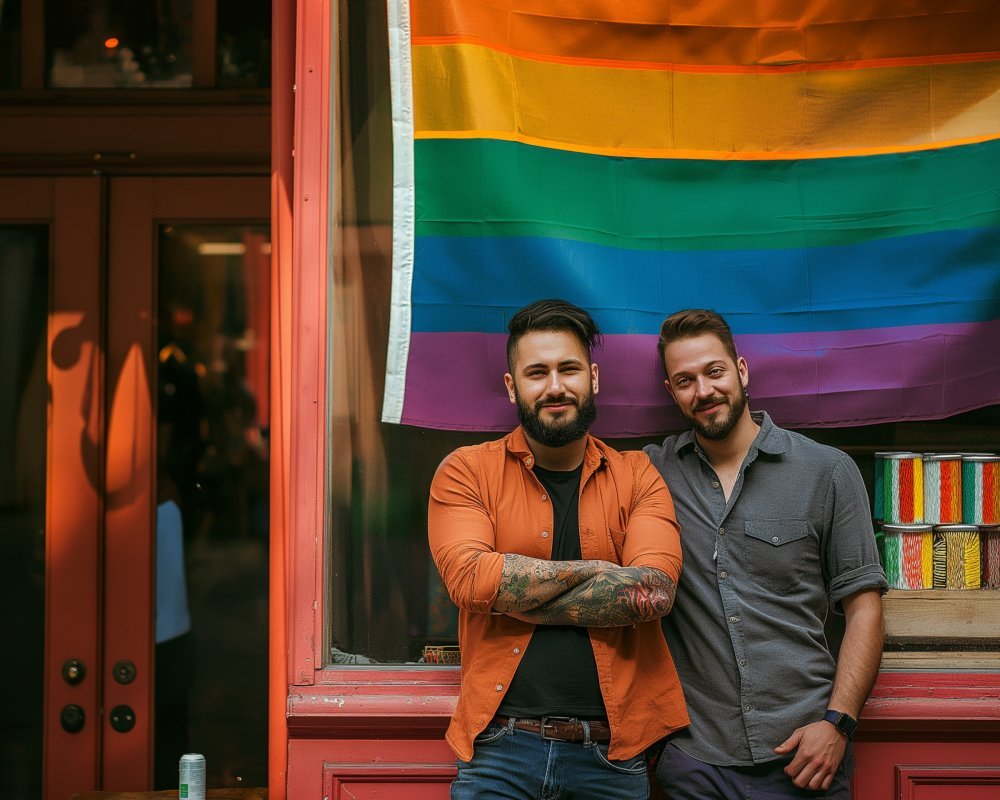
3. Historical Perspectives: The Beginnings of LGBTQ+ Portrayal
Understanding the History of LGBTQ+ Representation in Media provides critical context for modern-day portrayals. While open discussions of homosexuality or “queerness” were largely taboo in many cultures, evidence of same-sex love and desire appears throughout literature, art, and performance across time. However, overt representation in mainstream Western media had a long and treacherous path to navigate.
In the early days of Hollywood, for instance, a handful of silent films and early talkies subtly hinted at or featured “effeminate” male characters or “masculine” women. These coded portrayals were often comedic in nature, feeding stereotypes for the amusement of presumably heterosexual audiences. The Hays Code (enforced from the 1930s to the 1960s) explicitly restricted the depiction of “sexual perversion,” effectively banning authentic portrayals of gay or bisexual identities. Filmmakers found creative ways around censorship, often resorting to subtext or innuendo that queer audiences might pick up on, while mainstream viewers might miss it entirely.
Outside of cinema, in literature, authors like Oscar Wilde faced persecution for their personal lives even as their works contained veiled references to same-sex desire. Other writers, such as Radclyffe Hall with her novel The Well of Loneliness (1928), were censored or banned for tackling lesbian themes head-on. Onstage, theater productions sometimes navigated the moralistic labyrinth by casting gay characters as comedic or tragic figures. Yet these pre-Stonewall representations were extremely limited and often played into harmful stereotypes that equated queerness with deviance or pathology.
Despite these barriers, we do see glimmers of visibility. The very need for “codes” (for example, coded language in Hollywood) demonstrated that queer individuals existed within the industry, but simply couldn’t be out and proud on screen or in the press. By understanding these restrictions and how creatives subverted them, we see the first chapters of a long battle for open, honest LGBTQ+ representation, which paved the way for future generations to begin dismantling censorship and stereotypes.
4. Media’s Role in Shaping Public Perception
Media doesn’t just passively reflect society; it also shapes and influences public perception. When mainstream audiences consistently encounter negative or one-dimensional portrayals of gay characters—such as the flamboyant sidekick used for comedic relief, the predatory villain coded as queer, or the tragic victim whose story ends in heartbreak—it perpetuates harmful myths about what it means to be part of the LGBTQ+ community.
Conversely, when gay characters are portrayed as complex, relatable, and capable of love, success, humor, and all the full range of human emotions, it challenges prejudice. Media portrayal of LGBTQ people can serve as a catalyst for social change, prompting viewers to question stereotypes and empathize with queer experiences. Real-life data suggests that people who regularly engage with positive LGBTQ+ content are more likely to support LGBTQ+ rights and equality. This underscores the interplay between representation and broader cultural acceptance.
Historically, the notion of “moral panic” often surrounded any inclusion of LGBTQ+ themes. Policymakers, religious leaders, and conservative groups sometimes labeled these portrayals as corrupting or dangerous. Such attitudes put real pressure on studios, publishers, and broadcasters to censor or water down anything that might be deemed too “controversial.” Yet, in the face of such obstacles, many creators persisted. They recognized the power of telling queer stories to audiences who had never seen themselves reflected on screen or in print.
The shift in public perception over the decades—slowly evolving from widespread condemnation to a greater degree of acceptance—is directly linked to increasing representation in media. While prejudice certainly persists, the growing visibility of LGBTQ+ individuals in films, shows, advertising, and social media campaigns signals a broader cultural shift, showing the reciprocal relationship: a more accepting society creates space for more authentic representation, and more authentic representation helps build an even more accepting society.
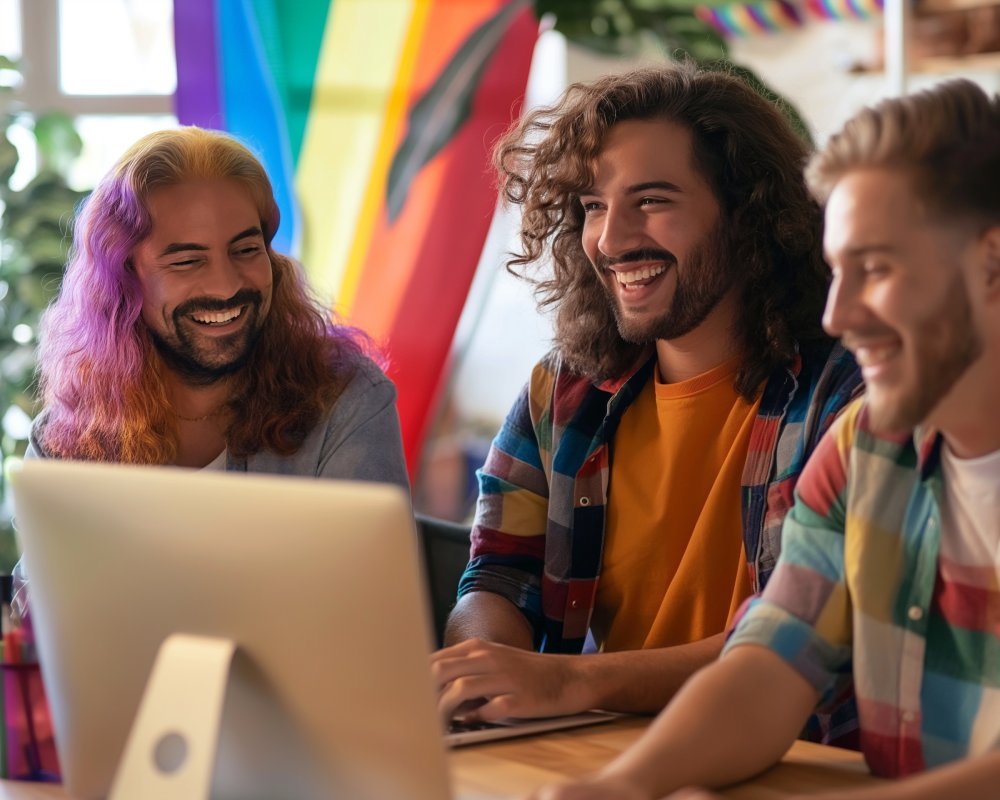
Recommended
5. Early Depictions: From Hidden Identities to Queer-Coded Characters
Before open LGBTQ+ storylines found mainstream acceptance, representation often manifested in covert, coded forms. Queer representation in media: the good, the bad—in the early years—was often overshadowed by a necessity to hide identities behind metaphors or to present them in ambiguous ways to slip past censors.
One of the best-known examples is the emergence of “queer-coding” in Hollywood’s Golden Age. Filmmakers would use certain mannerisms, vocal inflections, costume choices, or physical traits to suggest that a character was homosexual without explicitly stating so. Many times, villains in movies—especially Disney villains or criminals in classic noir films—exhibited these “queer” qualities, feeding the trope of the “deviant” bad guy. Audiences might not have consciously registered these signals, but the subtext was there, reinforcing associations between queerness and immorality.
In other instances, creative people embedded subtle references into storylines. Phrases, songs, or even set designs occasionally nodded to gay culture in ways that would go unnoticed by most viewers, but that queer audiences could interpret as a secret acknowledgment of their existence. This phenomenon occurred not just in film, but in literature and theater as well, weaving a hidden tapestry of LGBTQ+ identity in entertainment. Gay playwright Tennessee Williams used coded language and metaphors in plays like A Streetcar Named Desire and Cat on a Hot Tin Roof. These layered references allowed some form of self-expression without risking total censorship or professional ruin.
While these hidden identities and coded characters were undoubtedly limiting, they laid groundwork for more overt portrayals down the line. Queer-coded villains or side characters had the unintended consequence of letting some gay audiences see themselves—albeit through problematic, negative stereotypes—on screen at all. Over time, both filmmakers and viewers began to challenge the inherent biases in such coding. Instead of quietly accepting subtext, activists and creators pushed for open, positive representations, setting the stage for major shifts in the latter half of the 20th century.
6. The Importance of LGBTQ+ Representation
One might wonder: Why does The importance of LGBTQ+ representation in media matter so much? The answer lies in the profound influence storytelling wields. Stories teach us empathy, shape social norms, and validate experiences. When we see characters who share our identities, it tells us that our stories are worth telling, that our presence in society is recognized, and that our struggles and joys are understood.
For LGBTQ+ individuals, especially youth, media representation can mean the difference between isolation and acceptance—both self-acceptance and acceptance by others. Over the years, many have shared how discovering a gay character in a book, show, or film helped them realize they weren’t alone. It can be life-affirming to see a reflection of oneself that isn’t tragic or villainous but resilient, loving, and capable of happiness. This personal identification is a critical aspect of media’s power to change hearts and minds.
Additionally, representation in mainstream media influences public opinion. Non-LGBTQ+ audiences may initially hold misconceptions or biases. When they encounter queer characters as fully realized humans—people who experience pain, love, heartbreak, triumphs, and everyday struggles—prejudices can soften. Social science research corroborates that having some familiarity with LGBTQ+ individuals or narratives reduces hostility and fosters support for equality measures.
Conversely, poor or harmful representations—such as extreme stereotypes, token gay best friends with no character development, or sensationalized storylines about “gay trauma”—can stoke existing biases or reduce queer characters to mere plot devices. Such portrayals risk perpetuating a narrow view of the community, overshadowing its diversity and resilience. Thus, the quest for accurate and dynamic representation isn’t a superfluous demand; it’s a crucial step towards broader social justice and a reflection of basic human dignity.

7. Transitions in the Late 20th Century: Growing Visibility and Challenges
The late 1960s and the 1970s ushered in significant political and social changes for the LGBTQ+ community, especially following watershed moments like the Stonewall Riots of 1969. The increased activism, community organizing, and civil rights mobilization that followed injected new energy into demands for representation. While censorship and prejudice remained, cracks began to show in the old systems of silence.
Television shows began tentatively introducing gay characters in “special episodes” or as side characters. One early example was a 1971 episode of the sitcom All in the Family, where Archie Bunker discovers his macho friend is gay. While the portrayal was far from perfect, the mere inclusion of an openly gay character was a notable step forward in mainstream media. Similarly, TV movies like That Certain Summer (1972), depicting a divorced father who has a male lover, challenged audiences to confront gay relationships in a more humanized light.
The AIDS crisis of the 1980s significantly impacted both the LGBTQ+ community and the way media portrayed gay men in particular. News coverage often fixated on gay men as vectors of disease, reinforcing stigmas. Hollywood narratives about AIDS were initially scarce, but as the epidemic unfolded, some dramas started to address the issue directly—such as An Early Frost (1985) and later Philadelphia (1993). These films played a significant role in galvanizing public empathy and increasing visibility, though they often came laden with tragic undertones.
By the 1990s, mainstream shows like Roseanne and Friends featured recurring gay or lesbian characters, albeit within certain boundaries. The famous “coming out” episode of Ellen (1997) was a historic moment, launching Ellen DeGeneres into the national spotlight and propelling conversations about LGBTQ+ inclusion in prime time. However, backlash from advertisers and conservative groups revealed the persistent resistance to positive, normalized queer narratives. Even so, each small milestone expanded the horizons of representation, proving that it was possible—and increasingly profitable—to include LGBTQ+ storylines in mainstream media.
8. Contemporary Portrayals: The Good, The Bad, and The Complex
Today, it seems nearly impossible to turn on the television or browse streaming platforms without encountering LGBTQ+ characters. This surge in visibility has brought with it a broad spectrum of portrayals. The best examples include shows and films that deeply explore queer characters’ identities beyond mere labels, offering them full emotional arcs that resonate with diverse audiences. Examples like Pose, Schitt’s Creek, Brooklyn Nine-Nine, and Sex Education have drawn praise for their multifaceted queer characters who aren’t defined solely by sexual orientation or gender identity.
Yet, Queer representation in media: the good, the bad still stands. On the positive side, we see stories that celebrate same-sex relationships, coming-of-age narratives, and comedic adventures where a character’s queerness is as normal as any other trait. A wave of LGBTQ+ content creators—from YouTube personalities to independent filmmakers—has utilized social media platforms to produce content that bypasses traditional gatekeeping. This shift grants historically marginalized groups a chance to share their stories without heavy corporate interference or censorship.
On the negative side, issues like tokenism and queerbaiting remain common. Tokenism occurs when media includes an LGBTQ+ character just to appear progressive, without giving that character meaningful storylines. Queerbaiting involves hinting at a same-sex romance or a character’s queerness to lure in LGBTQ+ audiences, only to retract it, offering no genuine representation. These tactics exploit queer viewers for commercial gain without genuinely supporting or reflecting the community.
We must also confront the commodification of Pride themes—where corporations adopt rainbow logos during Pride Month but fail to support the community the rest of the year. Or they produce campaigns featuring a single gay character while ignoring deeper intersectional representation. The net result can be a contradictory media landscape, where on the surface it seems representation is everywhere, but a closer look reveals significant gaps and persistent reliance on old stereotypes or marketing ploys.

9. Intersectionality in Queer Representation
A vital part of analyzing gay representation in media is recognizing the intersection of race, gender identity, disability, class, and other facets of identity. Intersectionality—a term coined by scholar Kimberlé Crenshaw—underscores how different forms of discrimination and privilege intersect, shaping individuals’ experiences in complex ways.
Gay and queer individuals of color, for example, often face racism within LGBTQ+ spaces and homophobia or transphobia within their racial or cultural communities. Transgender and non-binary individuals—particularly trans women of color—may be even more marginalized, subject to violent discrimination that is rarely addressed in mainstream narratives. When media primarily focuses on cisgender, white, gay men, it can perpetuate the erasure of the broader LGBTQ+ family.
Shows like Pose, which centers Black and Latinx trans women and queer folks in the 1980s and 1990s ballroom scene, illustrate how intersectional storytelling can expand and enrich queer representation. Films like Moonlight highlight the intersection of Black masculinity, poverty, and queerness, offering a nuanced portrait of a life rarely seen in mainstream cinema. These works challenge the narrower depictions of gay life as predominantly white, affluent, and masculine.
Intersectional representation matters because it acknowledges that there is no single “gay experience.” By expanding the lens, media can reflect the full kaleidoscope of queer lives. This fosters empathy and understanding not just among heterosexual audiences, but within the LGBTQ+ community itself, encouraging solidarity across different identities and experiences. The more intersectional stories are told, the harder it becomes for harmful stereotypes or limited narratives to dominate.
10. Tokenism, Rainbow Capitalism, and Authenticity
As demand for inclusive content grows, so does the risk of superficial representation. Tokenism emerges when LGBTQ+ characters are inserted into a narrative simply to tick a diversity box—often with minimal character development or storyline significance. For instance, a movie might feature a side character briefly mentioning they’re gay, only for it never to be addressed again. While technically a form of representation, this does little to humanize queer experiences or deepen audience understanding. In some cases, token characters exist primarily for comedic effect, perpetuating stereotypes rather than dismantling them.
Rainbow capitalism or pinkwashing refers to the commercialization of LGBTQ+ identities. Corporations and brands might roll out rainbow-themed merchandise, ad campaigns featuring same-sex couples, or Pride sponsorships—yet simultaneously donate to anti-LGBTQ+ politicians or remain silent about critical issues impacting the community. This disconnect can breed cynicism and skepticism, as it becomes clear that not all expressions of “support” are motivated by genuine allyship.
Conversely, authenticity in media portrayal involves meaningful engagement with LGBTQ+ creators, consultants, actors, and writers. Authentically representing gay narratives means going beyond the surface to showcase the complexity, struggles, and triumphs within these communities. When creators make a concerted effort to hire queer talent behind the scenes, the final product usually resonates more deeply, reflecting lived experiences rather than assumptions or stereotypes.
An example of authentic engagement can be seen in series like Sense8, which had a diverse writers’ room and on-screen representation, or The L Word: Generation Q, which endeavors to include a variety of voices from the queer community. Ultimately, authenticity isn’t about perfection—it’s about honest storytelling, transparency, and a willingness to learn from mistakes. Audiences can often sense when LGBTQ+ representation is heartfelt versus when it’s an opportunistic marketing tactic.
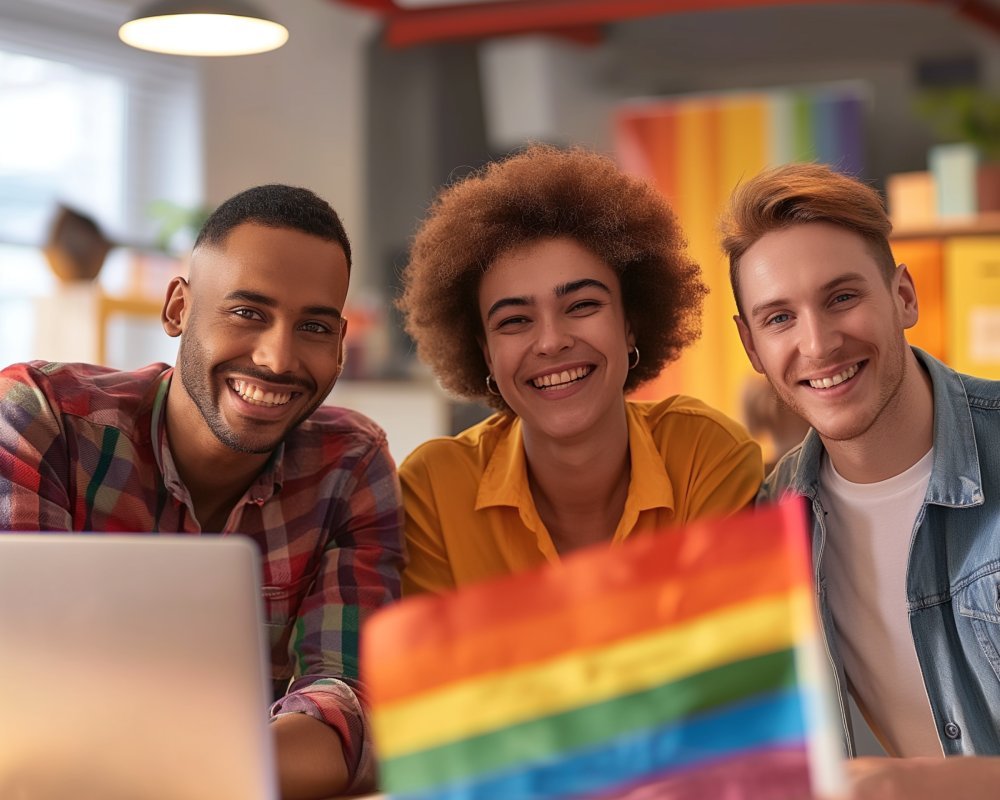
11. Highlighting Positive Representations and Case Studies
Despite the challenges, there have been landmark cases of robust, respectful, and empowering gay representation that have not only won critical acclaim but have also profoundly influenced cultural discourse. Below are a few key examples:
- Will & Grace (1998–2006, revival 2017–2020)
This sitcom famously centered on two gay men (Will and Jack) and their female friends (Grace and Karen). While it relied on comedic tropes, the show’s mainstream success played a significant role in normalizing gay characters on network TV. It paved the way for more explicit and varied portrayals of LGBTQ+ individuals, introducing a prime-time audience to openly gay main characters with agency and depth. - Brokeback Mountain (2005)
This film about two cowboys in a secret romantic relationship garnered widespread attention and acclaim. Its deep exploration of love, regret, and societal pressures offered a nuanced portrayal that eschewed stereotype-laden narratives. Despite controversy, its critical and commercial success revealed that mainstream audiences were willing to engage with emotionally authentic queer stories. - Moonlight (2016)
Chronicling the life of a young Black man grappling with his sexuality and identity in Miami’s impoverished neighborhoods, Moonlight became the first LGBTQ+ film to win the Academy Award for Best Picture. Its intimate storytelling and focus on intersectionality challenged Hollywood’s narrow conventions about race, masculinity, and queerness. - Pose (2018–2021)
Centered on the 1980s/1990s ballroom culture in New York, Pose features the largest cast of transgender actresses in a scripted series, bringing long-overdue visibility to trans women of color. It focuses on themes of chosen family, resilience, and the social realities of living at the intersections of race, gender, and sexuality. The show’s critical success and loyal fan base spotlighted the hunger for intersectional, historically informed stories. - Schitt’s Creek (2015–2020)
Celebrated for its charming portrayal of a pansexual main character, David Rose, and his relationship with Patrick, Schitt’s Creek sidestepped many tropes associated with queer storylines. Instead of highlighting trauma, the show embraced the sweetness of love and community acceptance, modeling a hopeful narrative without ignoring the complexities of coming out and self-discovery.
These case studies illustrate that audiences will wholeheartedly embrace gay representation that’s treated with respect, authenticity, and narrative depth. They also show how such portrayals can shift cultural norms, influencing everything from policy debates to family conversations. While these examples celebrate major leaps forward, they’re still just a fraction of what exists and what’s needed to fully reflect the richness of LGBTQ+ life.
12. The Ongoing Struggle: Challenges and Critiques
Even with significant strides, the fight for accurate gay representation is far from over. A persistent concern is the “bury your gays” trope, where queer characters are disproportionately killed off or suffer tragic endings. This pattern has roots in older censorship rules that forbade happy endings for characters deemed “sinful” or deviant, but it has unfortunately continued in modern narratives, leaving many queer viewers feeling frustrated and unseen.
Stereotypes also remain a problem. Gay men are often pigeonholed as effeminate comic relief, lesbians as hypersexualized fantasies for heterosexual male viewers, and bisexual or pansexual characters as promiscuous and indecisive. A lack of diverse queer experiences—particularly those of queer people of color, differently abled individuals, or those from non-Western cultural backgrounds—contributes to the notion that LGBTQ+ identity is a singular, homogeneous category.
Another challenge arises around how quickly representation can shift from groundbreaking to stale. Today’s media landscape is fast-paced, with audiences continually seeking fresh perspectives. Some series or films that once seemed revolutionary may now feel dated or lacking in intersectional awareness. This highlights the ongoing need for creators and consumers to remain vigilant, pushing for improvements as cultural attitudes evolve. Additionally, as more LGBTQ+ characters appear, critics rightly demand that these roles be played by LGBTQ+ actors, ensuring authenticity, fair employment opportunities, and a sense of genuine lived experience behind the performance.
Political climates also shape representation. In some regions, producing LGBTQ+ media remains difficult or dangerous due to censorship, anti-LGBTQ+ laws, or social hostility. Global streaming services must navigate these cultural and legal terrains, sometimes resulting in edited or banned content. It underscores the fact that what might be celebrated in one country could be deemed unacceptable in another, complicating efforts to create universal and accessible queer narratives.
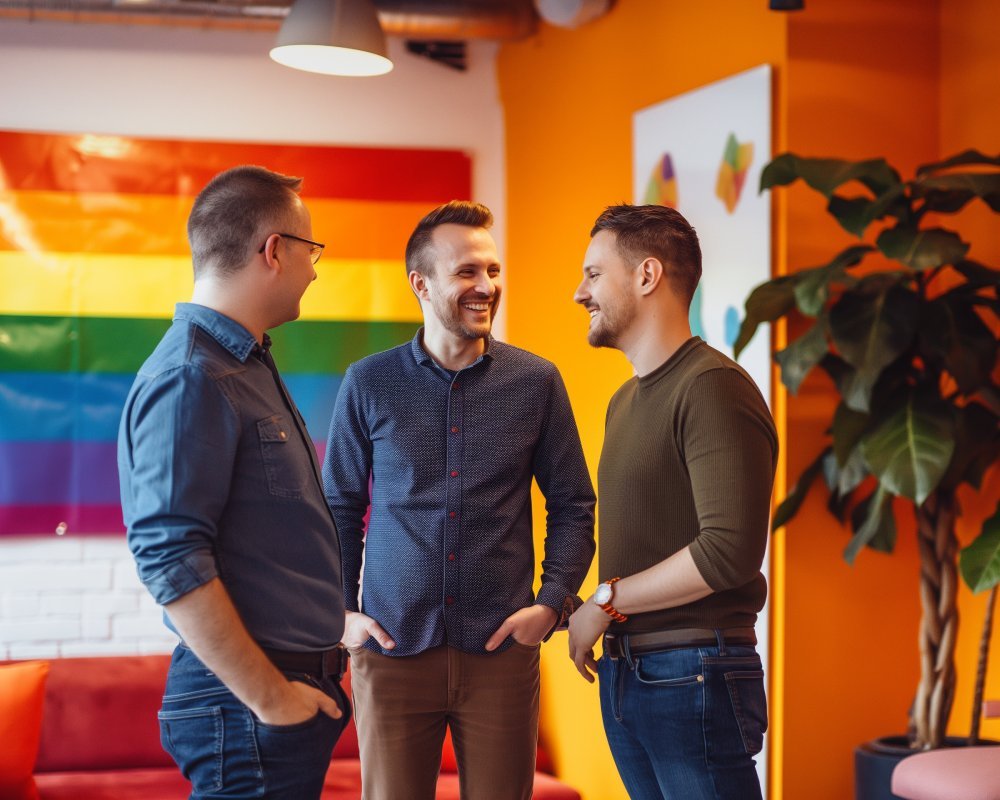
13. Future Directions: A More Inclusive, Nuanced, and Global View
As we look to the future, a few key paths for growth in LGBTQ+ representation emerge:
- Expanding Intersectionality
Representation can’t be limited to gay, cisgender, white characters. There’s an urgent need for more trans, non-binary, asexual, intersex, disabled, and BIPOC queer characters whose narratives are given the same level of care and depth. Shows like Pose and films like Moonlight demonstrate how embracing intersectionality enriches storytelling and fosters broader solidarity among marginalized groups. - Cultural Exchange and Global Narratives
With streaming platforms transcending national borders, we have opportunities for greater diversity in queer representation from around the world. Stories from Africa, Asia, Latin America, and the Middle East can challenge Western-centric portrayals and highlight unique cultural perspectives. Some examples include Rafiki (Kenya) and Happy Together (Hong Kong), which provide nuanced local contexts for same-sex relationships. The sharing of these stories fosters cross-cultural empathy and solidarity. - Creator-Controlled Platforms
Independent creators are more empowered than ever to share content via YouTube, TikTok, webcomics, podcasts, and crowdfunding. This democratization bypasses traditional gatekeepers who may be reluctant to fund “risky” queer projects. As technology evolves, we can expect more user-generated content that celebrates genuine experiences and fosters niche communities—an ongoing counterbalance to Hollywood’s occasional conservatism. - Nuanced Depictions of Identity
More representation does not necessarily mean better representation. Future portrayals must prioritize depth over surface representation, exploring the complexities of coming out, relationships, mental health, family dynamics, career pressures, and more. Ideally, mainstream shows will integrate these stories naturally, rather than relegating them to standalone “very special episodes.” - Collaboration with LGBTQ+ Communities
Hiring LGBTQ+ writers, directors, producers, actors, and consultants is integral to ensuring authentic narratives. Collaboration fosters deeper storytelling, offering a variety of viewpoints. The success of shows like Transparent (despite certain controversies) and Queer Eye demonstrates how involving queer creators can lead to content that resonates widely.
By embracing these paths, media industries and independent creators can continue to shift the landscape of representation. While the journey is far from complete, each step forward helps weave a more vibrant tapestry of voices and experiences into our cultural consciousness.
14. Conclusion: Reimagining and Reclaiming LGBTQ+ Narratives
Gay representation—and more broadly, LGBTQ+ representation—is a dynamic, ever-evolving tapestry of art, commerce, politics, and cultural movements. Its history is etched with censorship, hidden meanings, brave defiance, and triumphant visibility. Each era leaves a distinct imprint on the next, creating a layered story of ongoing resistance and growth.
In modern times, the questions have changed from, “Is it possible to have a gay character?” to “How many gay characters are there, and how are they portrayed?” That evolution in discourse alone speaks to immense progress. Nevertheless, challenges persist: stereotypes remain, intersectional identities are often overlooked, and rainbow capitalism sometimes co-opts genuine representation for profit.
Yet, there is reason for optimism. As technology expands opportunities for storytelling, as grassroots activism compels organizations to be more inclusive, and as younger generations become increasingly diverse and accepting, the foundation is set for continued progress. For gay, lesbian, bisexual, transgender, non-binary, intersex, and other queer individuals, seeing accurate reflections of themselves in media is more than entertainment—it’s affirmation, validation, and a beacon of possibility.
It’s also a call to action. We can all be agents of change by supporting authentic LGBTQ+ stories, calling out harmful representations, and pushing for inclusive hiring practices in media and entertainment industries. Whether you’re a viewer, a creator, an educator, a journalist, or an industry decision-maker, your choices shape whose stories get told and how. In that sense, each of us holds a piece of the puzzle in reimagining and reclaiming LGBTQ+ narratives for generations to come.

15. Additional Resources and Further Reading
- GLAAD (Gay & Lesbian Alliance Against Defamation)
- GLAAD provides media monitoring, resources, and advocacy to ensure fair LGBTQ+ representation across platforms.
- Key Resource: Annual “Where We Are on TV” reports measuring LGBTQ+ characters in broadcast, cable, and streaming media.
- The Trevor Project
- While primarily focused on crisis intervention and suicide prevention for LGBTQ+ youth, The Trevor Project offers valuable educational materials on the importance of positive representation.
- Human Rights Campaign (HRC)
- HRC’s resources include research and guidelines on workplace inclusion, media advocacy, and public policy, helping readers understand the broader context of queer visibility in various sectors.
- Books and Anthologies
- The Celluloid Closet by Vito Russo: A seminal work on gay representation in film history.
- Out in Culture: Gay, Lesbian and Queer Essays on Popular Culture (edited by Corey K. Creekmur and Alexander Doty): Explores queer theory and media analysis.
- Documentaries
- Disclosure (2020): Directed by Sam Feder, focusing on transgender representation in film and TV.
- The Times of Harvey Milk (1984): Chronicles the life and assassination of Harvey Milk, weaving in media’s portrayal of openly gay politicians.
- Independent and Alternative Media
- Look for web series, independent films, podcasts, and digital publications created by queer artists and activists. Platforms like YouTube, Patreon, and Vimeo often feature a more diverse range of voices than mainstream outlets.
- International LGBTQ+ Film Festivals
- Attending or streaming films from festivals such as Outfest, Frameline, or BFI Flare broadens your perspective, revealing global variations in LGBTQ+ storytelling.
By engaging with these resources, you can delve further into the rich tapestry of LGBTQ+ media representation, gaining historical insights and staying updated on current conversations. Whether you’re exploring for personal understanding, academic study, or creative inspiration, the journey through queer storytelling is expansive, enlightening, and ever-shifting. Each new narrative builds upon the last, enriching our collective lexicon of possibility and transforming how we see ourselves—and one another—in the tapestry of human experience.

More Recommended
From Niche to Mainstream: The Rise of Gay-Owned Companies in the Marketplace
From Niche to Mainstream: The Rise of Gay-Owned Companies in the Marketplace – From Niche [...]
Where Are the Gay-Friendly Cities?
Where Are the Gay-Friendly Cities? A Comprehensive Guide to the World’s Most LGBTQ-Inclusive Destinations Table [...]
Exploring the Role of Gay Leaders in Social Movements
Exploring the Role of Gay Leaders in Social Movements – Leadership plays a crucial role [...]
Visible and Proud: How Lesbian Entrepreneurs are Changing the Advertising Game
The Impact of Lesbian Entrepreneurs on Advertising and Marketing Lesbian entrepreneurs are making their mark [...]
Marketing with Pride: How Brands Are Celebrating LGBTQ+ Culture and Community
Marketing with Pride: How Brands Are Celebrating LGBTQ+ Culture and Community – “Embracing Diversity: How [...]
What Is Gay History Month?
Blog Title: What Is Gay History Month? A Comprehensive Guide to LGBTQ+ History and Celebration [...]
Diversity Drives Dollars: The Economic Benefits of LGBTQ+ Inclusive Marketing Campaigns
Diversity Drives Dollars: The Economic Benefits of LGBTQ+ Inclusive Marketing Campaigns The LGBTQ+ community has [...]
How to Plan a Lesbian Wedding
How to Plan a Lesbian Wedding: A Complete Guide Planning a wedding is an exciting, [...]
Exploring Gay Rights Legislation Around the World
Exploring Gay Rights Legislation Around the World – The fight for LGBTQ+ rights has been [...]